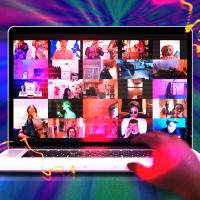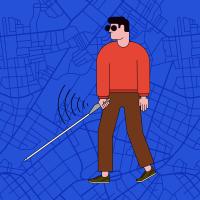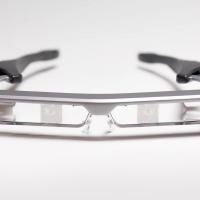For the deaf and hard of hearing, enjoying live entertainment has been inherently challenging, but the use of a haptic suit could finally change that. The music industry is one which, by its very nature, has excluded certain populations from accessing it. Now, haptic technology is providing a way for people to experience the music not through their ears, but through their skin.
Behind the idea is Not Impossible Labs, a team of out-of-the-box thinkers who use technology to solve seemingly impossible problems in the world today. They believe that society’s most complex issues can be solved with “fewer echo chambers and more elbow grease.”
The team’s previous endeavors have included creating sonic localization technology to help a blind skateboarder navigate a skatepark and helping a man with ALS audibly communicate with his wife for the first time in 15 years. “Music: Not Impossible” is one of their newest projects that is dedicated to finding ways to make live entertainment more inclusive.
How a Haptic Suit Can Make Concerts More Inclusive
To the folks at Not Impossible Labs, the fact that deaf people cannot experience live music seemed unfair and absurd. Although physically listening to music does require hearing, the brain and its interpretation of outside stimuli also play a role in the perception of music. This means the deaf can still sense the sound of music, but in a different format: vibrations.
The problem is that the only vibrations at live music events come from traditional speaker systems. For this reason, Not Impossible Labs set out to create a device that uses haptic feedback to change the way we access music.
What is haptic feedback? Haptic feedback is communication through the use of touch. It’s the tactile or kinesthetic reaction we receive when we touch something, or something touches us. We perceive that object according to the response we receive from that touch.
Those touch sensations are part of the somatosensory system. Our skin and the underlying tissue have receptors which help our brains understand tactile details. The human body’s somatosensory system has at least 12 known specialized receptors and each one sends different information to the brain. Haptic feedback allows for the harnessing of these receptors to initiate intended responses.
This technology isn’t necessarily new. Smartphones utilize haptics through vibrations along with a number of other touch sensations. Virtual reality systems use them to help create textile responses and cues. Music: Not Impossible is using the tech in a haptic suit to help individuals experience live entertainment in a new way.
The Making of the Haptic Suit
The Music: Not Impossible team discovered that through a series of vibrations, music can essentially be translated onto the skin. Using a haptic suit of sorts, they’re providing a way for individuals to perceive soundwaves via touch rather than hearing.
Daniel Belquer, the team’s director of technology, explains the software that runs that haptic suit, “Right now we have 24 points of vibration in the system and they’re all individually controllable. We can control frequency and amplitude. We can make a note stronger or weaker, higher or lower.”
The process of creating a sensory experience similar to hearing was intrinsically difficult. As Belquer explains, “It’s like trying to explain what is blue to a colorblind person, because you lack the metaphors, you lack the language and, more than that, you lack the references as an experience to be able to relate.”
To ensure that the haptic suit truly enhanced the concert-going experience for the hard of hearing, Music: Not Impossible partnered with Mandy Harvey, a deaf singer-songwriter. After years of research, collaboration, and development, they were able to engineer a complete platform for composing, translating, and sending vibrations wirelessly.
One important component of this technology is that, while it was built to foster inclusivity for the deaf and hard of hearing, it doesn’t exclude others in the process. The haptic suit is intended to enhance the live entertainment experience, making it more complete and dynamic for all.
Belquer states, “It’s not just about the experience. It’s about the community. Deep down in the core of this whole concept it’s about how we can be humans together.”
The Music: Not Impossible team created technology that has the potential to change how we interpret and experience music forever. The ingenuity of this new artform is breaking down societal barriers, and making us eagerly anticipate the next seemingly impossible feat this team will tackle.
For more interesting news about the people and ideas that are changing our world, subscribe to Freethink.


